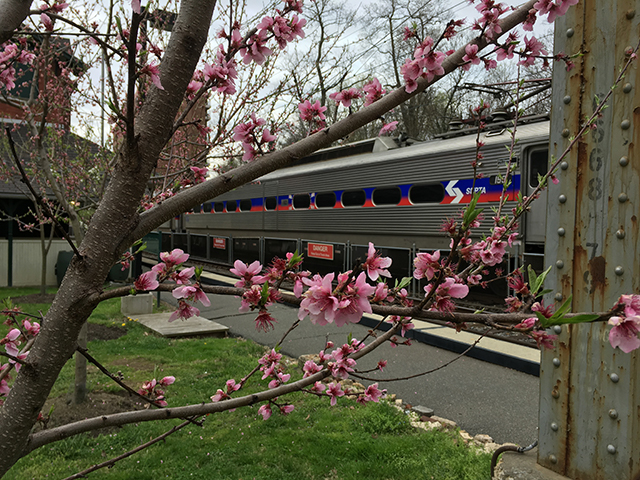Our mission was primarily threefold: to create a beautiful green space at the threshold to our neighborhood, to offer fruit for the taking, and to provide habitat for wildlife.
Linda Corsover drew up a design for a combined orchard and native woodland, and SEPTA approved the plan. Weavers Way Community Services (now Food Moxie) gave us a small start-up grant, and the Philadelphia Orchard Project (POP) agreed to advise us concerning the fruit trees. (POP has a great article on the garden on their site.)
Cleanup took place in the fall of 2012. SEPTA provided a 30-foot dumpster in the spring of 2012 for all the trash that had accumulated there over the years, and neighbors miraculously filled it up!
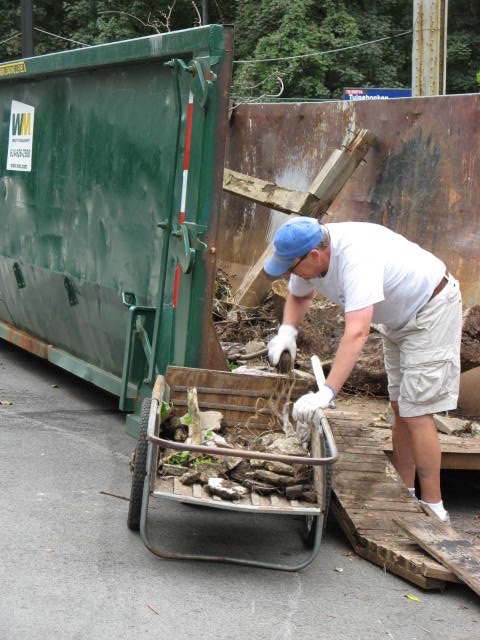
Luke Russell leveled the landscape with his tractor, and clover was planted.
The first trees were planted in the spring of 2013, and additional trees, including the fruit trees, were planted the next fall. Some of the trees have been purchased by WCGN, but there have been generous donations of trees by POP, TreePhilly, McFarland Landscaping, and individual neighbors. In addition, the adjacent apartment building has kindly allowed water access to the gardeners.
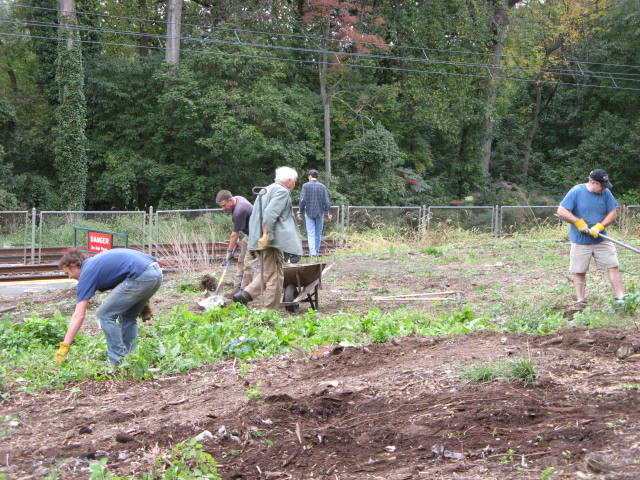
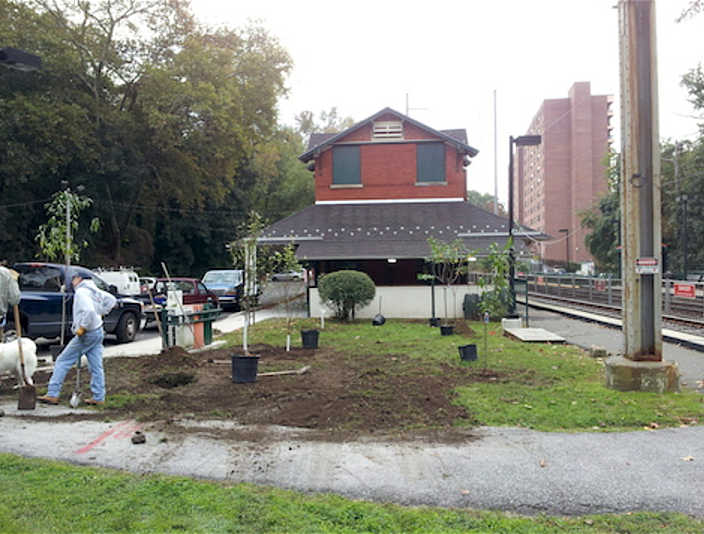
Since then, the garden committee has held fall and spring workdays to weed, mulch, and otherwise maintain the site. During the Memorial Day Picnic, volunteers sign up to help with weekly watering throughout the growing season. This most welcome participation offers neighbors a sense of ownership and investment in the project.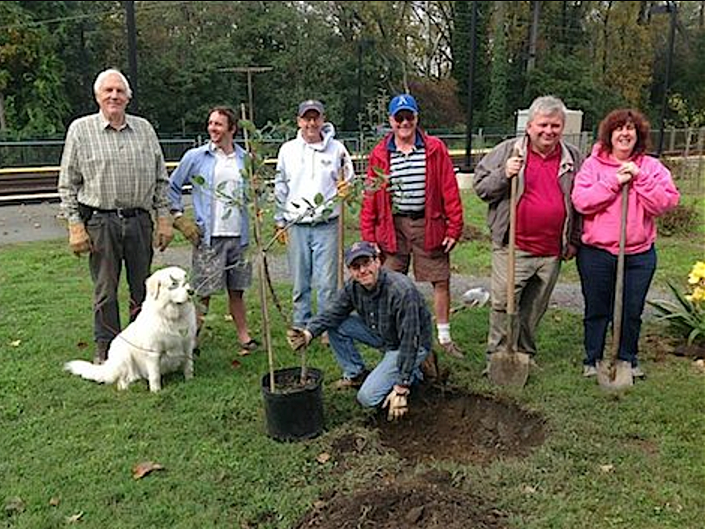
In one of the preliminary meetings WCGN’s Garden Committee sat down with Phil Forsyth, the executive director of POP, to get advice regarding its idea of including a small fruit orchard in its plan. At that time, Phil said he had a sapling apple tree, which he’d been nursing along for a couple of years, that had originated in Bucks County sometime before 1842 and was actually called the Tulpehocken Apple!
Since it literally had our name on it, it was one of the first trees donated by POP to the station garden, and it has pride of place: the Tulpehocken Apple (also sometimes called the Fallawater Apple) is the small tree in the center of the triangle bordered by the pedestrian walkways.
It has had its problems, the worst one being a severe case of aphids in the summer of 2016. But as of early July 2017, it seems to be coming back strong.
In 2016 the committee received a grant through GUCDC to install pollinator beds. Now a collection of native perennials not only supports insect life (including monarch butterflies) and enhances fruit tree pollination, but provides color throughout the growing season.

One of the purposes of the garden is to provide habitat and food for birds, butterflies, bees, and other pollinators. Accordingly, most of our plantings are native to our particular area and the garden committee restricts itself to organic gardening practices. It is hoped that at some point the garden will be certified as a wildlife habitat.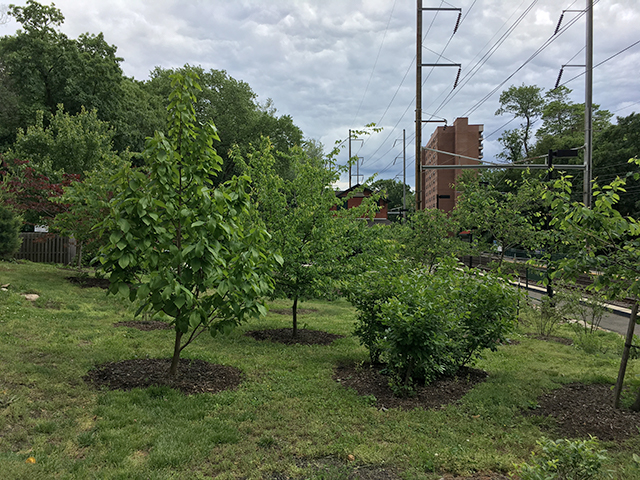
As for the fruit trees and bushes, it is hoped that as they mature they will provide fruit for the taking as people pass through. The pollinator perennials should help with that, too.
